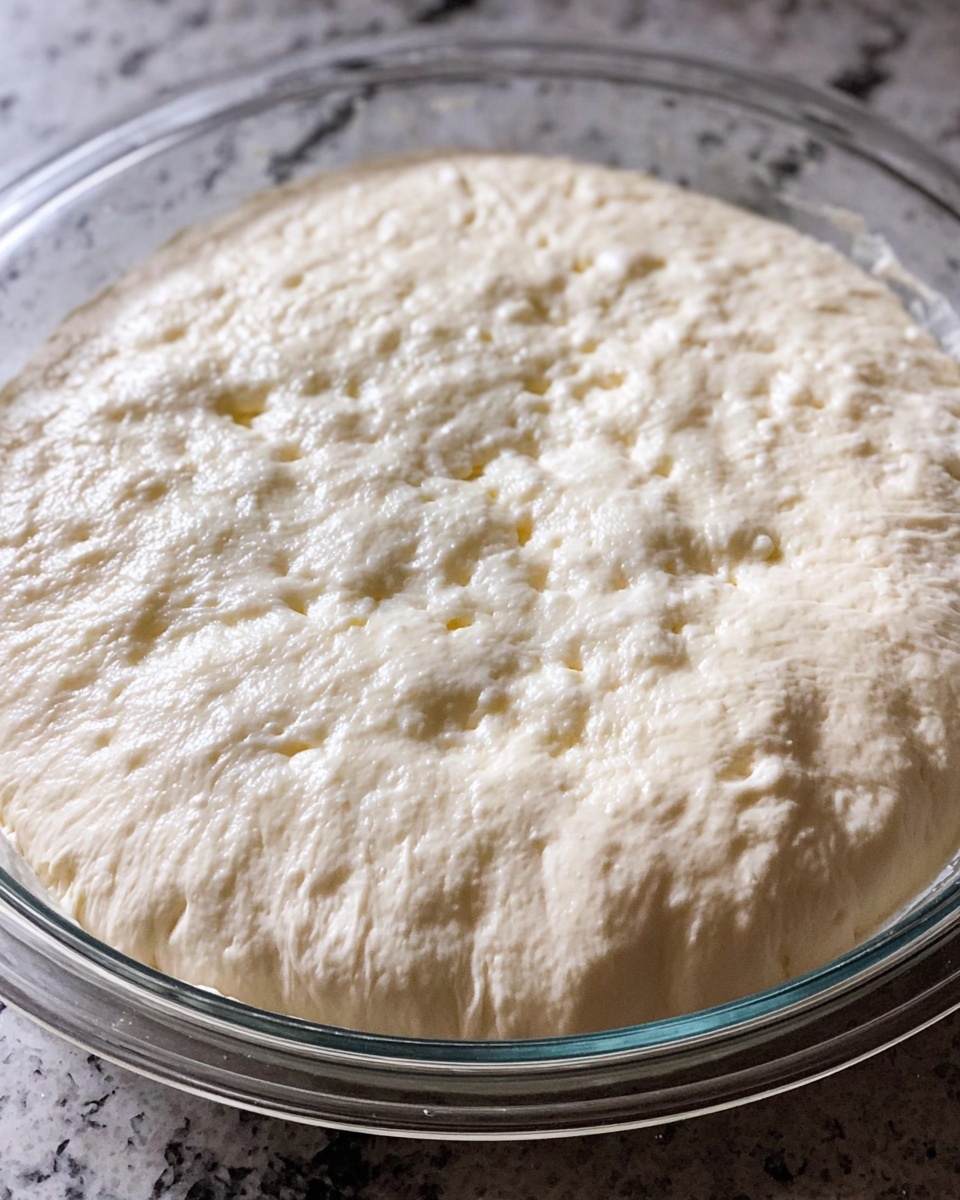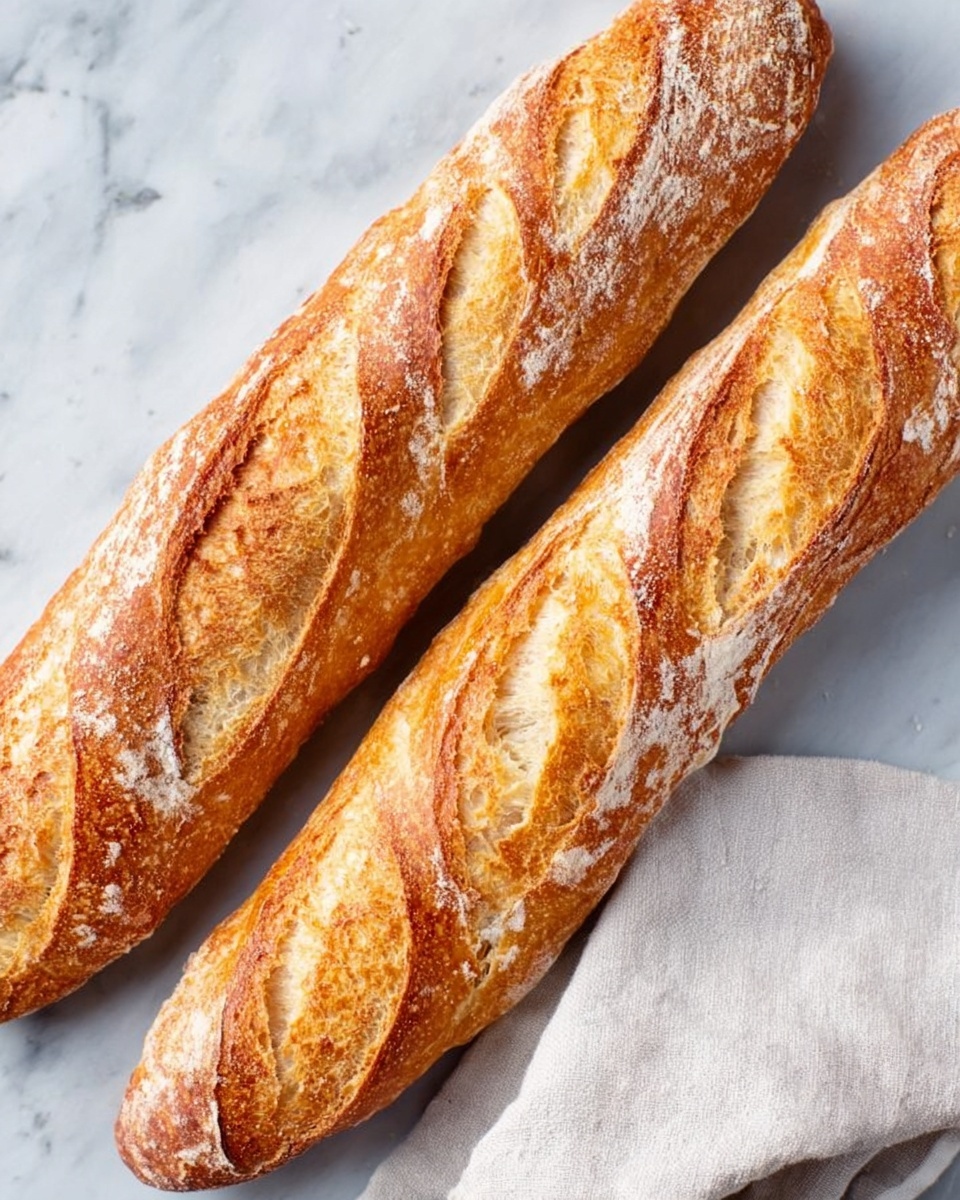If you have ever dreamed of creating artisan-quality baguettes without the fuss of traditional kneading, the No Knead Baguette Recipe is your new best friend. This effortlessly simple recipe transforms just a handful of everyday ingredients into golden, crispy-on-the-outside, tender-on-the-inside baguettes with minimal hands-on time. Perfect for bread lovers who cherish rustic texture and flavor, this recipe truly unlocks the joy of home baking with nothing more than a little patience and love.
Ingredients You’ll Need

The beauty of this No Knead Baguette Recipe lies in its simplicity. Each ingredient plays a crucial role in building flavor, structure, and crust, resulting in baguettes that rival those from your favorite bakery.
- 6 cups all-purpose flour: The foundation for your baguettes, providing structure and that classic chewiness; some brands may require an extra sprinkle to get the dough just right.
- 3 cups lukewarm water: Activates the yeast and hydrates the flour for a beautifully wet, sticky dough necessary for a great crumb.
- 2 teaspoons yeast: Responsible for that wonderful rise and airy texture, working overtime during the long rest.
- 2 teaspoons salt: Enhances flavor and controls yeast activity, balancing everything perfectly.
How to Make No Knead Baguette Recipe
Step 1: Mix and Rest Your Dough Overnight
The night before baking, bring all your ingredients together in one bowl. Start by blending the dry ingredients—flour, yeast, and salt—then pour in the lukewarm water and stir until a sticky dough forms. It’s okay if it looks rough and a bit shaggy; that’s exactly what you want. Cover the bowl with plastic wrap and leave it on your countertop for 12-20 hours. This long, slow fermentation develops extraordinary flavor and texture with zero elbow grease.
Step 2: Shape Your Baguettes
After your patient wait, you’ll find your dough bubbly and incredibly sticky, which is a good sign it’s ready. Flour your hands generously and your baking sheet to prevent sticking. Gently lift and shape your dough into classic baguette forms—usually two to three loaves per batch. Don’t worry if it’s a little loose; flour helps guide the dough’s shape. Place them on the sheet, dust with flour, score each loaf’s top with a sharp knife to allow expansion, then cover with a towel. Let them rise for 1 to 2 hours until puffy and springy to touch.
Step 3: Bake for Crispy, Golden Baguettes
Preheat your oven to 450 °F and set up two shelves inside. On the bottom rack, place a deep pan filled with 2 cups of hot boiled water to create steam—this is the secret to that irresistible crispy crust. Put the shaped baguettes on the middle rack and bake. After 10 minutes, carefully remove the water pan and continue baking another 30 minutes until your baguettes are beautifully golden brown and crisp.
How to Serve No Knead Baguette Recipe

Garnishes
While this No Knead Baguette Recipe shines on its own, a sprinkle of flaky sea salt or fresh herbs like rosemary just before baking adds a delightful touch. You can also brush the crust lightly with olive oil after baking for a glossy finish that enhances richness.
Side Dishes
Baguettes are incredibly versatile, making the perfect companion to creamy cheeses, freshly made soups, or hearty stews. Fresh tomato bruschetta or a tangy olive tapenade offers a bright contrast to the bread’s warmth and crunch.
Creative Ways to Present
Cut your baguettes into thick slices for visually impressive appetizer platters or slice thinly and toast to make crostini topped with anything from smoked salmon to whipped ricotta. For brunch, split and fill with scrambled eggs, avocado, or ham for a rustic sandwich experience everyone will love.
Make Ahead and Storage
Storing Leftovers
Wrap any leftover baguette tightly in plastic wrap or a reusable beeswax wrap to keep air out and prevent the crust from softening too quickly. Stored at room temperature, your bread will stay fresh and tasty for up to two days.
Freezing
If you want to keep your No Knead Baguette Recipe longer, freezing is a great option. Wrap the baguettes tightly in plastic or foil and place them in an airtight bag. When frozen properly, they maintain quality for up to three months.
Reheating
To reheat frozen or day-old baguettes, unwrap and place directly on a baking sheet in a 350 °F oven for 5-10 minutes. This will refresh the crispy crust and warm the soft crumb inside, making it taste nearly fresh-baked.
FAQs
Is the dough really no knead?
Yes! The magic here is in time and hydration. Letting the dough rest overnight allows gluten to develop naturally without any kneading, making bread-making easy and accessible.
Can I use whole wheat flour instead of all-purpose?
You can substitute part of the flour with whole wheat, but because whole wheat flour absorbs more water and creates denser bread, you might want to adjust the water amount and expect a slightly different texture.
What does scoring the baguette do?
Scoring allows the bread to expand in the oven without bursting irregularly. It also creates that iconic baguette look and helps with the final texture of the crust.
Why do I need to add water to the oven while baking?
The hot water produces steam, which gives the baguettes their glossy, crackly crust and helps retain moisture inside for a tender crumb. It mimics the steam-injected ovens used by professional bakers.
Can I shorten the resting time?
The long resting period is key to flavor and texture development, so shortening it will affect the bread’s quality. However, if in a pinch, you can reduce the rest, but expect less depth of flavor and a dough that’s harder to shape.
Final Thoughts
There is something deeply satisfying about pulling fresh, crusty baguettes from your own oven without all the traditional fuss. This No Knead Baguette Recipe opens the door to homemade artisan baking for anyone willing to watch and wait. I encourage you to give it a try—the joy of slicing into a warm, golden baguette with your favorite meal is a simple pleasure that never gets old.
PrintNo Knead Baguette Recipe
This No Knead Bread-Baguette recipe is a simple yet delicious way to make homemade French-style baguettes with minimal effort. Using just a few ingredients, this method relies on a long fermentation time to develop flavor and texture, resulting in crusty, golden baguettes with a soft, airy crumb. Perfect for beginners and bread lovers alike, this classic American adaptation requires no kneading, just mixing and patiently waiting for the dough to rise overnight.
- Prep Time: 25 minutes
- Cook Time: 40 minutes
- Total Time: 13 hours 5 minutes
- Yield: 12 servings
- Category: Bread
- Method: Baking
- Cuisine: American
Ingredients
Ingredients
- 6 cups all-purpose flour (depending on brand, may need slightly more)
- 3 cups lukewarm water
- 2 tsp active dry yeast
- 2 tsp salt
Instructions
- Mix the Dough: The night before baking, combine all dry ingredients—flour, yeast, and salt—in a large bowl. Slowly add the lukewarm water and stir until the dough just comes together into a wet, sticky mass. No kneading is required. Cover the bowl tightly with plastic wrap and leave it to ferment at room temperature for 12 to 20 hours.
- Prepare for Shaping: The next day, the dough should be bubbly, sticky, and well-risen. Generously flour your hands and a baking sheet to prevent sticking.
- Shape the Baguettes: Using floured hands, carefully lift the dough from the bowl. If it’s too sticky, add more flour to your hands as needed. Gently shape the dough into 2 or 3 long baguette forms on the floured baking sheet. Sprinkle additional flour on top, score the tops with a sharp knife to allow expansion, and cover loosely with a towel. Let the shaped dough rise in a warm spot for 1 to 2 hours until puffed.
- Preheat Oven with Steam Setup: Preheat your oven to 450 °F (232 °C). Position two shelves inside the oven. Place a deep baking pan on the lower rack and fill it with about 2 cups of hot, boiled water. This creates steam to develop a crispy crust during baking.
- Bake the Baguettes: Place the baking sheet with the baguettes on the middle rack. Bake for 10 minutes with the water pan inside to generate steam. After 10 minutes, carefully remove the water pan, then continue baking the bread for an additional 30 minutes or until the baguettes turn a deep golden brown and develop a crisp crust.
Notes
- Flour brands differ; you might need to adjust flour quantity slightly for perfect dough consistency.
- For best flavor, ferment the dough for a full 12-20 hours depending on your schedule.
- Ensure to score the dough well to allow controlled expansion during baking.
- Using steam during baking is key to achieving a crunchy crust similar to traditional French baguettes.
- Leftover baguettes are great for sandwiches or toasted with butter the next day.







